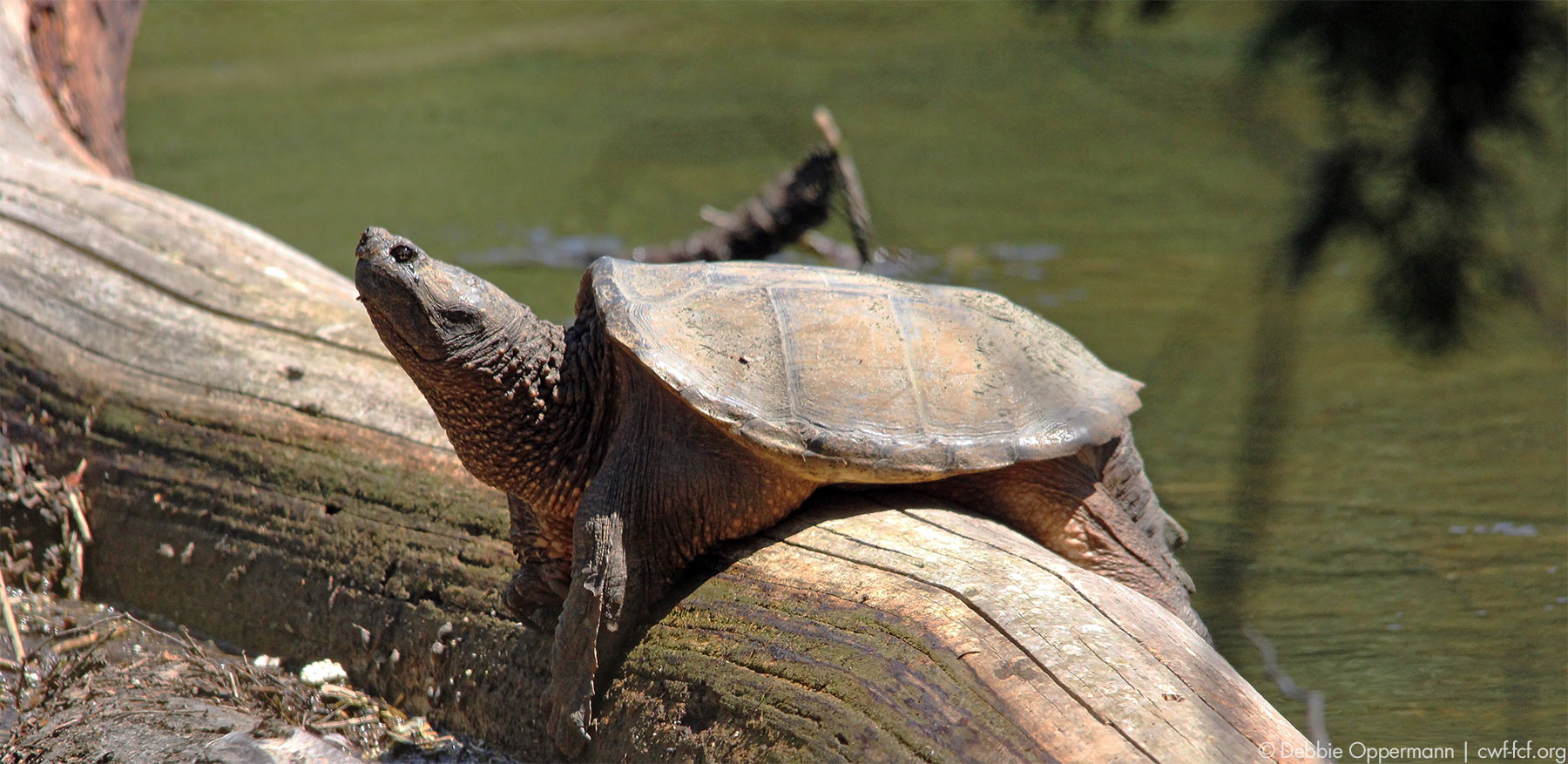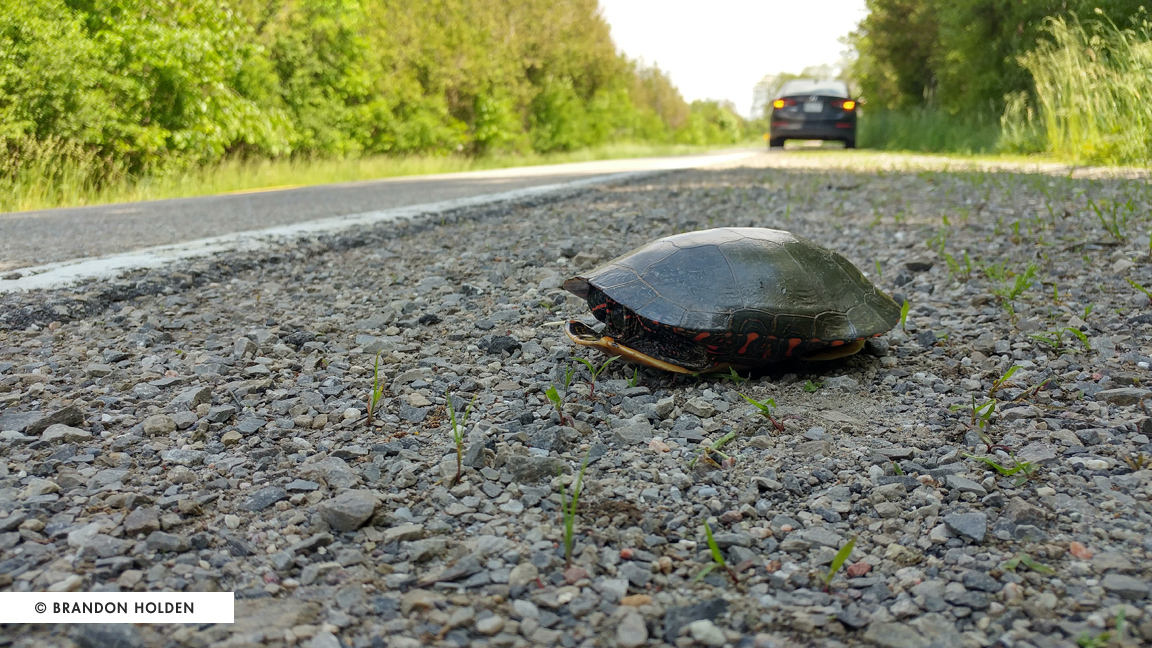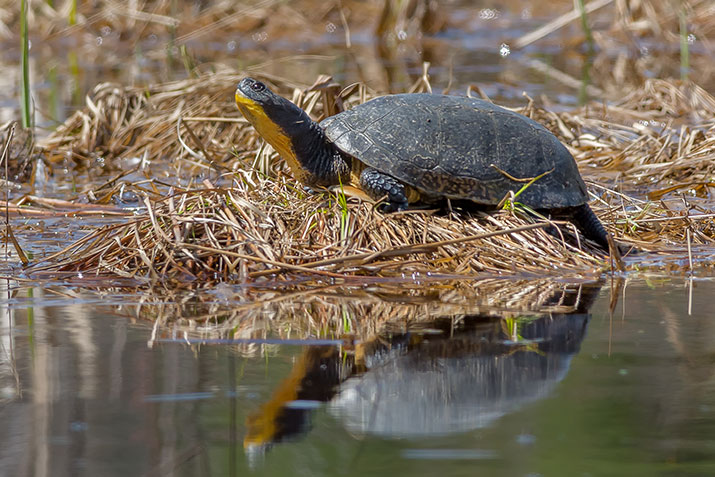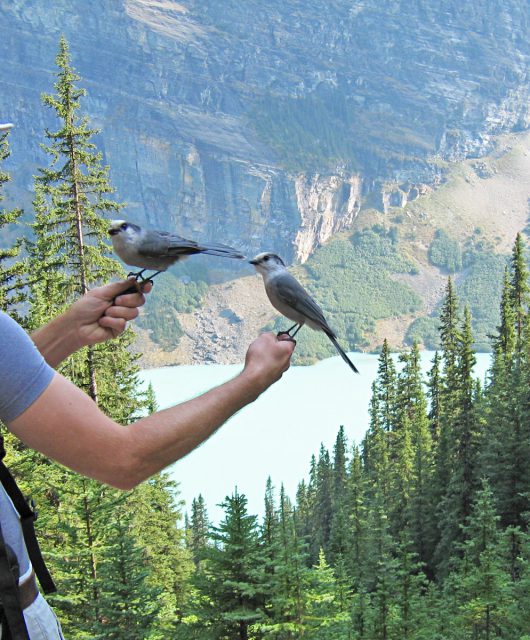Happy Mother’s Day! As you celebrate, keep a lookout for turtles — she could be a mom, too!
Let’s follow along as these female turtles embark on a challenging journey to create new life.

Step 1: Taking the Long Road
It’s May, which means female turtles are preparing to lay their eggs. They have spent the last month or two basking in the sun to form their eggs. *Bliss* But now comes the hard part: a very long, dangerous walk to nest.
Once the eggs are ready to be laid, most female turtles travel over land to find the perfect spot to dig a nest. They are looking for open sunny areas with loose soil. Some turtles, like the Blanding’s Turtle, can travel over six kilometres for this journey!
Unfortunately, that often means they need to cross a few roads along the way. This puts these expectant females at risk of being hit by a vehicle. Most turtles react to danger, like a car zooming past, by freezing and hiding inside their shell. This can mean that the turtles spend even more time on busy roads. If you find an injured turtle, call your local wildlife rehabilitator for help.

Step 2: Location! Location! Location!
If she successfully crosses the roads along her journey, she may decide to lay her eggs in the soft gravel shoulder. Female turtles spend some time scoping out potential areas and can easily get scared away, so you should not disturb a nesting turtle. If her choice is in a dangerous location the nest can be covered by a nest protector or the eggs can be incubated by an expert.
After the turtles lay their eggs, their duties are complete. They leave the nest and return to their summer habitat. But, the eggs now have three to five months of incubation they need to survive before they hatch. They need to remain undetected by nest predators, like raccoons and foxes.

Step 3: New Hatchlings
If the eggs survive incubation, the hatchlings may emerge in the fall. At this point, many turtles begin their search for a spot to hibernate for the upcoming winter months. But some species, like the Painted Turtle, will stay in the nest cavities only a few centimetres below the surface of the ground for the entire winter! The hatchlings can survive ice particles forming between the cells in their bodies.
The hatchlings are not out of danger yet:
- As a quick snack for predators such as skunks, chipmunks, and herons
- At risk of dehydration if there isn’t any shade nearby
- At risk of being hit by a car, if they hatch out on the side of an open road
If the hatchlings can survive the perils of their young lives, then they have a much better chance of having offspring themselves.
Step 4: The Cycle Continues
Adult turtle shells are incredibly strong and turtles live for many decades. Some turtles do not reach maturity until their mid-teens, but then they have to continue to lay eggs for most of their life to replace themselves and their mates. They often lay more eggs as they get older too!

How We’re Helping Turtles
The Canadian Wildlife Federation is doing its part to Help The Turtles. Our teams of turtle biologists survey some Ontario roads looking for turtles. If we find nesting female turtles in our study areas, we record their location, let them finish nesting, and collect the eggs if the nest is in a dangerous location. The locations of turtles along roads can help us narrow down the best places to install fencing and crossing structures to help turtles cross the road safely on their journeys.


